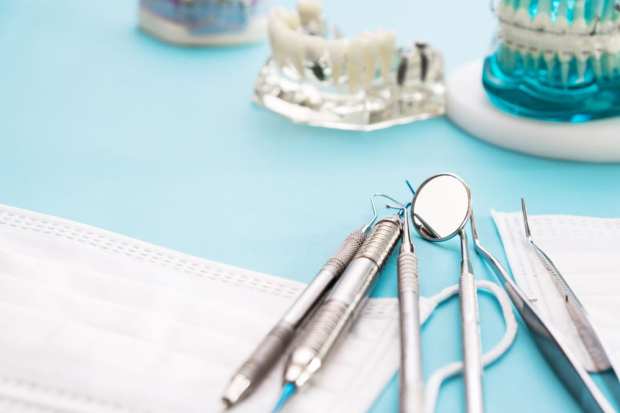Giving B2B Dental Payments A Digital Treatment

Sluggish, paper-based insurance claims and payouts can leave dentists waiting weeks or even months to get paid — delays that can impact their cash flows. In this month’s Digitizing B2B Payments Tracker, Arthur Schoen, vice president at Aspen Dental Management, explains how insurance providers can use artificial intelligence (AI) and digital tools to process and pay claims faster.
The dental sector may be in need of a digital boost.
Dental practices typically go through many steps to receive payments, and the time and costs involved can quickly mount when many of these processes are handled manually.
Care providers charge patients bill portions, and then submit claims and supporting documentation to insurance providers for the remaining amounts. They must then wait for those claims to be approved and funds to be paid out.
Inefficiencies surrounding these processes can cause serious pains, said Arthur Schoen, vice president of insurance operations and revenue cycle management at Aspen Dental Management. The firm provides administrative and general business operation support services to the Aspen Dental-branded network of dental practices.
Schoen said that dental practices and insurers that use legacy, paper-based methods to deal with claims, send payments and handle accounts receivable (AR) can face many frictions. He stated that the pandemic has provided a strong incentive for change, however, as insurance carriers and practices are both looking to reduce the number of employees who must be on site. This new focus is making legacy approaches seem outdated.
“[In] the new world of maximizing social distancing and working from home, there has been a realization that all of this paper may not be necessary,” Schoen said. “Some payers had to limit the operations of their mailrooms. Likewise, providers were looking to minimize staff in their offices and speed [up] reimbursement.”
These newfound challenges — as well as dental practices’ demands to be paid more swiftly by insurance firms as the global health crisis stresses their incomes — could increase the demand for digital payments and AR methods. Insurance carriers that implement high-powered tools to boost claims processing could also trim frictions and accelerate the sector’s B2B payments.
Payouts And AR
The dental industry has lagged behind most of the medical sector when it comes to modernizing. The Council for Affordable Quality Healthcare (CAQH) reported that just 13 percent of dental plans paid providers’ claims using electronic methods in 2019, whereas 70 percent of medical plans reportedly did the same. Dental industry heavyweights have yet to make the same strong push for digital updates and standardization experienced in the medical sector, Schoen said, which is partly to blame for the former’s relatively low levels of digitization.
“The medical industry benefited from mandates from Medicare and large provider organizations driving adoption and standardization,” he explained. “The same dynamics do not exist in the dental space, so adoption has been much slower.”
Dental practices could benefit if more insurance companies delivered electronic payments, however. These practitioners receive funds more swiftly and securely when the money is delivered via ACH and electronic funds transfers (EFTs), and Schoen said those methods also make it easier to process the associated data.
Updating these transactions requires effort from more than just insurance firms. Dental practices must also ensure that their AR systems are modern enough to quickly process the accompanying digital remittances data or they could be unable to fully realize the advantages of these electronic transfers.
“The ability of many dental practice management systems to process electronic remittance advices [or ERAs] is more limited [than in the medical sector],” he said, referring to the electronic data transmissions used to send remittance and payment details to healthcare providers.
“Without a solid [ERA] to match to EFT/ACH payments, many of the benefits are significantly diminished,” he said.
Getting AR up to speed thus remains a problem for many dental operations, even though getting over these bumps could unlock new conveniences for them.
Claims Attachments
Dental companies often need to receive quick decisions on claims from their insurance partners as dentists must follow up with patients regarding any amounts that insurance plans refuse to cover. Practices that must wait a long time to receive insurance carriers’ decisions then have to track down patients long after their treatments and ask them to make what are often unexpected payments. These consumers may no longer be capable of paying these bills, which can put dentists under financial stress and damage their customer relationships.
“Plan limitations regarding frequency, maximums, alternate benefits … stacked and leased networks and provider participation all contribute to getting estimation correct [on patients’ out-of-pocket expenses],” he said. “Delayed payments from payers can then lead to delays in billing the patient if the estimate was wrong or if the provider decided to wait for the payer’s response before billing the patient.”
It can be difficult for practices to streamline these claim submission processes. Dental providers might file claims electronically, but they often have to send supporting documents like imaging and treatment notes to bolster their cases, and providing these documents digitally can be a challenge.
The CAQH noted in 2019 that there was still no federally approved standard for how to digitally send patient-specific supporting documentation in a safe, compliant manner. It stated that this held many practices back from automating the process.
Change may therefore come from insurance carriers first. Schoen said that he expects more and more insurance companies to leverage artificial intelligence (AI) tools to quickly process images and other documentation that accompany claims.
Dental practitioners facing new hurdles during the pandemic may find it more important than ever before to ensure they can receive their payments quickly and easily, and insurance carriers in the space may similarly crave ways to reduce their own workloads and better support the providers with which they work. The dental sector ultimately stands to benefit from implementing swift, digital processes rather than friction-filled, paper-based ones.

